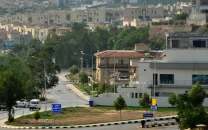Excess power capacity
.

Pakistan's power sector is mired in a tragic paradox, with citizens enduring relentless load-shedding and unaffordable bills. The nation pays Rs2.5 to Rs2.8 trillion annually to power plants that don't generate a single unit of electricity. This astronomical sum — equivalent to roughly 3% of GDP — epitomises a system where financial engineering trumps public interest, burdening consumers with costs for "capacity" that remains perpetually idle.
The roots of this scandal lie in flawed power purchase agreements (PPAs) signed with independent power producers (IPPs). These contracts guarantee fixed "capacity payments" regardless of actual electricity generation, transferring all operational and market risks to the public. As Pakistan's installed capacity grew to over 46,000 MW — driven significantly by over 2,800 MW added through net metering — the utilisation of existing plants plummeted. Thermal power, though still dominant at 55.7% of the mix, remains underused in the winter due to transmission constraints and seasonal demand fluctuations — winter demand is about 12,000 MW, compared to summer demand of about 30,000 MW.
Substandard transmission lines have been blamed for the failure to bring several new cost-effective plants online, notably Port Qasim, China Power and Lucky Electric. Instead, the government continues to rely on older, less efficient plants, resulting in a double whammy of unnecessary capacity payments and increased pollution. Capacity payments accounted for about 71% of the power purchase price last year and are projected to rise by one-third this year.
The guaranteed payments are also a sorry example of 'socialism for the rich and capitalism for the poor', which is at the core of most of Pakistan's economic failings. Annual capacity payments exceed Pakistan's healthcare budget sixfold, and IPPs often inflate costs without fear of reprisal due to the sweetheart deals they were granted by every government over the past three decades. Meanwhile, millions of citizens are struggling to pay their inflated power bills.
While some PPAs have been terminated, the government still has much work to do to rectify the situation, including grid modernisation and continuing to encourage a shift to renewables and locally-sourced fuels. It is also worth noting that in most countries, revenue from capacity payments is reinvested into infrastructure and other efficiency improvements instead of being rerouted to shareholders. Here, IPPs and distributors both have the gall to demand government intervention to improve infrastructure for which they are already receiving 'free money'.
An egregious recent example saw one distributor, in response to criticism of its loadshedding policy, actually suggest that the government take over loss-making feeders while letting it reap all the profits. That such a suggestion could seriously be made is in itself a reflection of the power imbalance in the power sector.














COMMENTS
Comments are moderated and generally will be posted if they are on-topic and not abusive.
For more information, please see our Comments FAQ